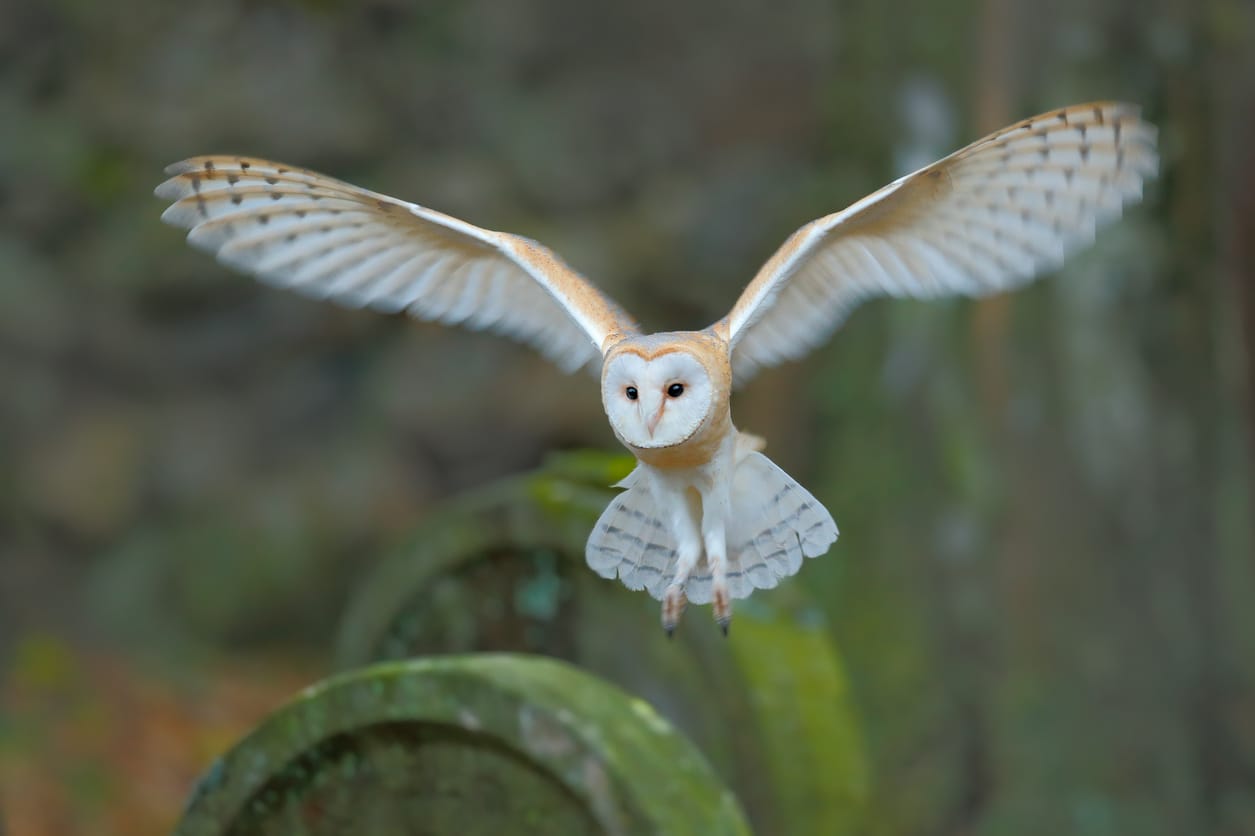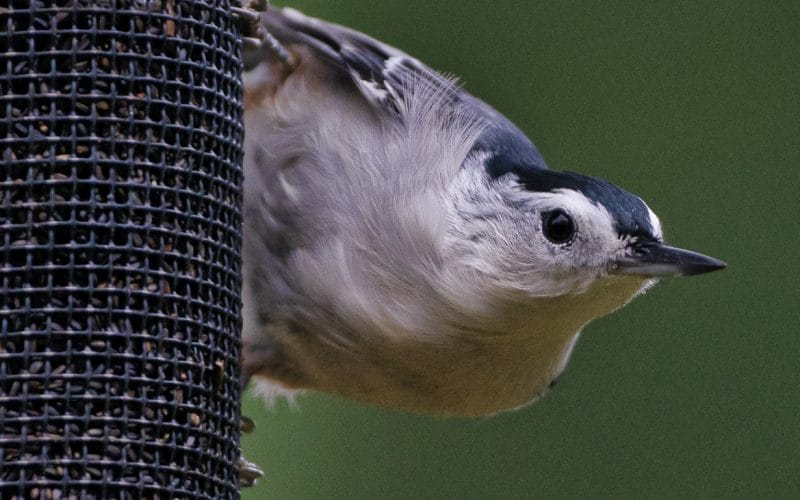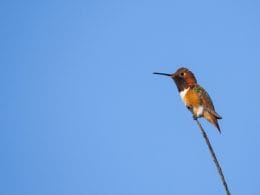Mysterious and wise are two words that come to mind when we describe owls. Elusive is another.
Because they’re nocturnal habits, we rarely get to see them during their day. Their camouflage is another reason why they always seem to be out of sight.
Yet, you’ll be surprised to know that there are over 20 owl species in all of North America. 12 of these can be found In the state of Minnesota alone.
In this post, we’ll talk about all the species of owls in Minnesota. We’ll also talk a bit about their appearance and size, so you’ll know exactly which species you’ve spotted.
Let’s get started.
12 Owls in Minnesota
Minnesota lies on the largest of the five Great Lakes, Lake Superior. It’s known for its lush and diverse habitats, wildlife, and birds. Nicknamed ‘The North Star State,’ this midwestern state has a variety of owl species. They come from as far south as South America and as far north as the Arctic.
According to the state’s Department of Natural Resources (MDNR), the 12 owls in Minnesota are evidence of its rich biodiversity. This means the state has an abundance of rodents, insects, and woodlands, among others.
Read ahead to find out more about each of these species in detail.
1. American Barn Owl

Minnesota is a great place to see the American Barn Owl as they love the habitat. If you hear a hissing, screeching sound flying overhead, it might very well be an American Barn Owl.
Top Tip: Barn Owls are famous for their round, white faces. They’re earless with dark arcs over their eyes that look like eyebrows.
Females have a slightly different appearance. Their faces are framed with darker feathers than the males. In addition, they have black spots scattered on their wings, chest, and bellies.
They’re primarily nocturnal and prefer hunting small mammals, such as voles, mice, and rabbits. They’ll also eat lizards, insects, and even small birds if given the chance.
2. Barred Owl

Barred Owls (Strix varia) typically live in densely wooded areas. They prefer habitats near water where they can snack on crayfish and crabs. They’ve also been spotted eating rodents, like small rats and voles.
They commonly come out at night. Still, they often call and hunt during the day as well. They sound like someone saying ‘who cooks for you?’
Even more interesting is their mating call. Part of their courtship rituals involves a concoction of strange sounds. There’s even one that sounds like maniacal laughter, which can be pretty spooky if you’re caught off-guard.
As their name implies, they’re covered in striped, or barred, plumage. It’s mostly brown and white with dark, ringed eyes. They’re earless and they have dark bands framing their faces. Both of which give them a more prominent appearance.
3. Boreal Owl

Boreal Owls (Aegolius funereus) get their name from their habitat: the boreal forests. They’re commonly spotted in coniferous forests of spruces, pines, and larches.
Earless with mostly all-white faces, Boreal Owls are distinguished by their small beak. Their yellow eyes are another prominent feature. It’s an indication that they’re more active during the day.
This is when they can easily find food, which mainly consists of voles. They’ll also eat shrews, insects, and small birds.
Their most common calls are different whistles made by the males, especially during mating season. Year-round, if you hear a ‘kip’ sound, that might be an indication that a Boreal Owl is nearby.
4. Burrowing Owl

Out of most of the species of owls in Minnesota, you’ll likely come across Burrowing Owls (Athene cunicularia) the most. They have no problem setting up their habitats in open areas, such as prairies and farmlands. Some have even been observed near airfields and golf courses.
Author Note: In contrast to other owl species that build or usurp nests, Burrowing Owls dig their own. If they find a deserted burrow, they’ll likely just call it their own and save themselves the hassle. These shelters are usually left behind by small animals, like armadillos, kangaroo rats, or prairie dogs.
According to the Audubon Society, their population is decreasing in North America as a result of human efforts to limit their main food supply, which includes prairie dogs and ground squirrels. Still, you may occasionally find them in western parts of The North Star state.
One interesting feature is their pale-colored faces, yellow eyes, and dark barred plumage. Also, they’ve been given the nickname ‘howdy birds’ because they often appear to be nodding their heads.
5. Eastern Screech-Owl
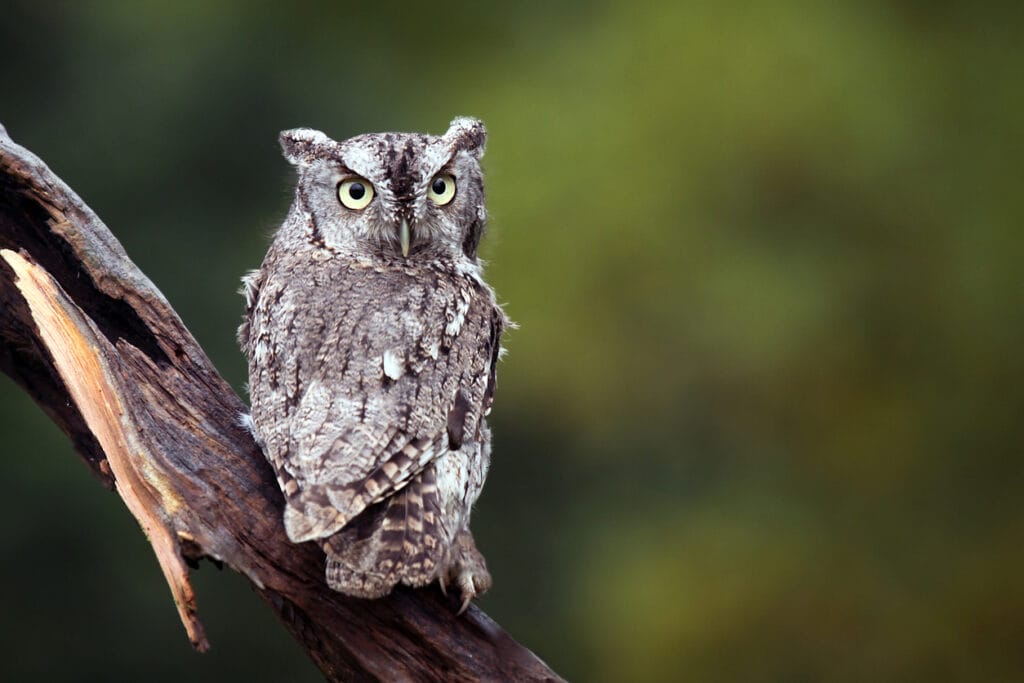
The first owl on our list to show ear tufts, the Eastern Screech-Owl (Megascops asio) is a sociable, curious bird. You can even attract them to your backyard feeder by adding a nesting box.
They’re pretty lazy and don’t dig or build their own nests. Instead, they tend to lay their eggs on whatever’s available. This could be a tree cavity or a conveniently placed nesting box in your yard.
Another thing that’ll get them to hang out in your yard? Birdbaths. So, if you can, consider setting up a birdbath for a nice, relaxing nighttime bath, since they’re nocturnal.
If not, you can always spot these birds anywhere that has ample tree cover. Places like city parks, forests, and suburban areas are common habitats. It’s also where they’ll likely find food, which is pretty convenient because they’ll eat almost anything.
6. Great Gray Owl
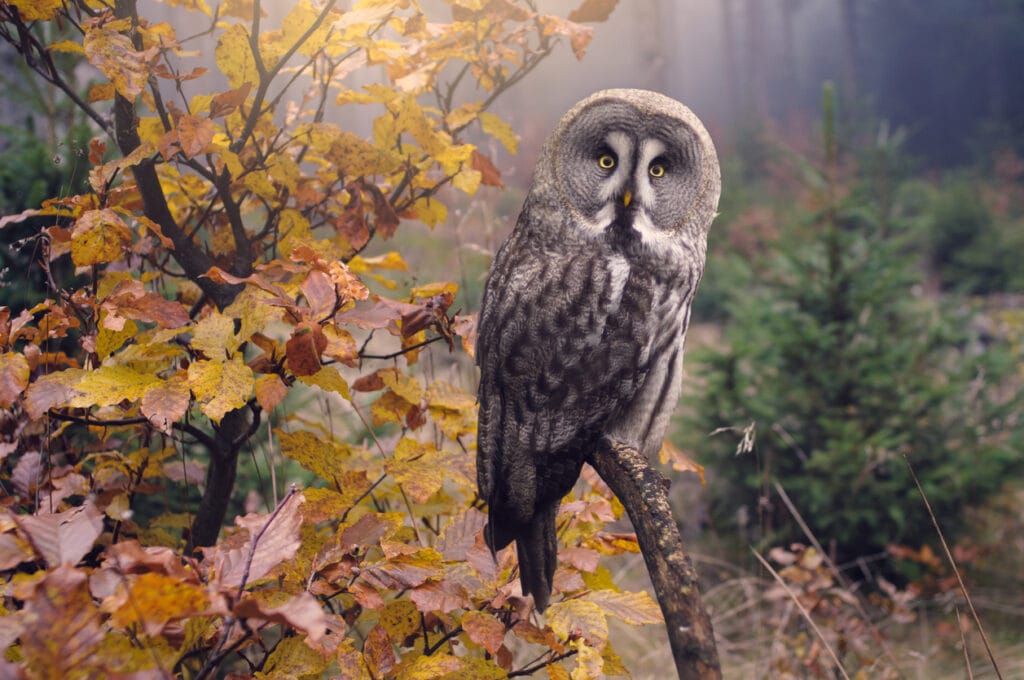
Known for its deep, soft hoots, the Great Gray Owl (Strix nebulosa) has dull gray plumage. With a round face and no ear tufts, its facial disk gives this majestic bird a broad, flat appearance. Another characteristic feature, feather patterns on the neck make it look like it’s wearing a bow tie.
Another distinctive feature is its size. As a matter of fact, the Great Gray is the largest owl in North America.
Nicknamed ‘Phantom of the North,’ these birds have a defensive streak, especially when it comes to their nests. They’ve been known to stand up to black bears to protect their home and young.
Their large size makes them menacing predators. They typically hunt rodents, like voles, weasels, and rats. Nevertheless, they’re highly private and nocturnal. This makes it pretty hard to spot them, even late at night.
7. Great Horned Owl

You know that classic ‘hoo-HOO’ sound you hear in movies? That’s the sound of a Great Horned Owl (Bubo virginianus).
Author Note: These brownish-white birds are the most common species of owls in the Americas. The Great Lakes area is where they’re more abundant, particularly in the southeast parts of Minnesota.
Obviously, they don’t have any horns. It’s only how their ear tufts are pointy and slightly spiked. These large tufts of feathers are known as ‘plumicorns.’
Another unique feature of the Great Horned Owl is its well-structured digestive system. It’s so efficient, it can break down a full-bodied prey without a hitch. Their silent, but deadly, attacks allow them to eat anything from skunks to squirrels and raccoons. They’re also known to eat small falcons and hawks, even small-sized owls as well.
8. Long-eared Owl
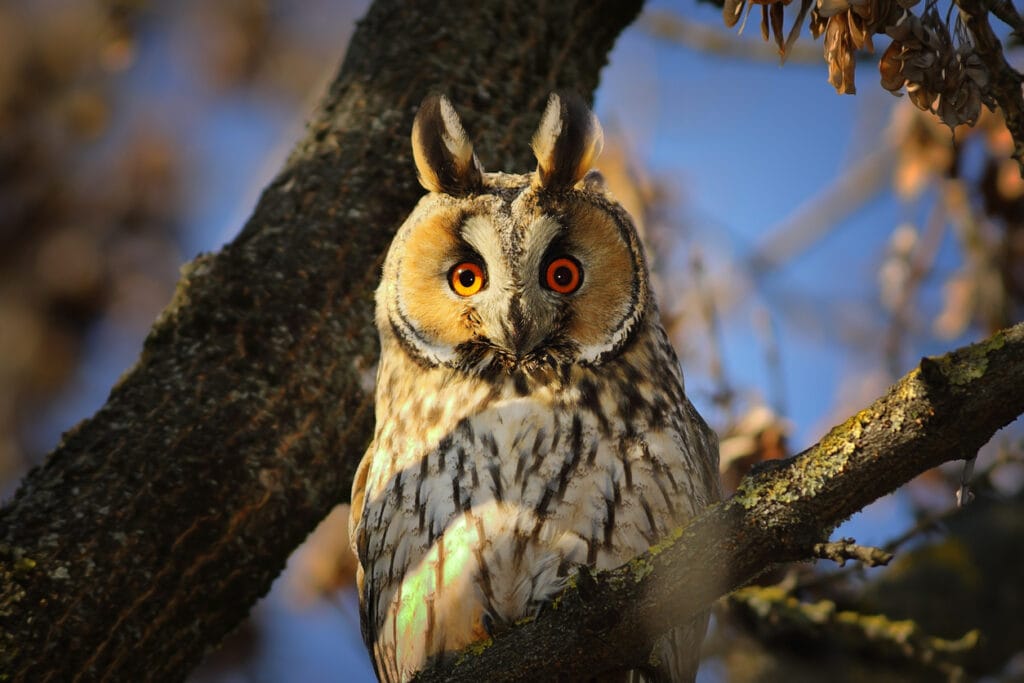
The diurnal Long-eared Owl (Asio otus) can be spotted hunting and nesting during the day. These social birds roost in groups in the winter, which makes them even easier to spot.
Yet, their dark gray plumage provides them with excellent camouflage. So, it may take you longer than you think. Keep your eyes open and pay attention to any long, low-sounding hoots. That’s a dead giveaway.
Also, if you spot several inches of pellets strewn underneath a tree, that’s likely to be a ‘roosting tree’ for Long-eared Owls. The pellets are basically the parts they were unable to digest.
What they do is swallow their prey whole, such as rodents, small reptiles, and even bats. Then, they spit out, or regurgitate, anything unpalatable or inedible.
9. Northern Hawk Owl
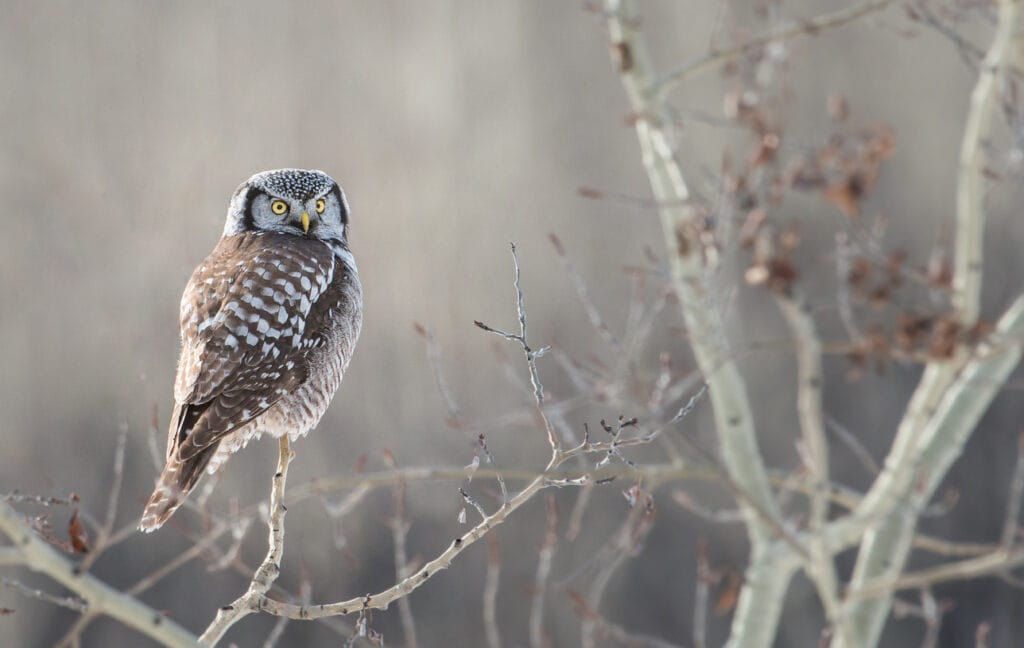
Northern Hawk Owls (Surnia ulula) are diurnal. Known for their dark browline and long mating whistles, they’re easier to spot than other species. It also helps that they’re not shy around humans.
They have a tapered brown tail and horizontal stripes on their bellies and underwings. This helps them blend in with tree branches where they find shelter in tree cavities. If they can’t find any, they’ve been known to kick out various birds of prey and take over their nests.
What’s even more significant is their hearing. These scowling birds have symmetrical ear openings, unlike many other owls on our list.
More impressive is that they can hear sounds up to an entire foot from under the snow. That’s bad news for their prey because there’s no place to hide.
10. Northern Saw-whet Owl
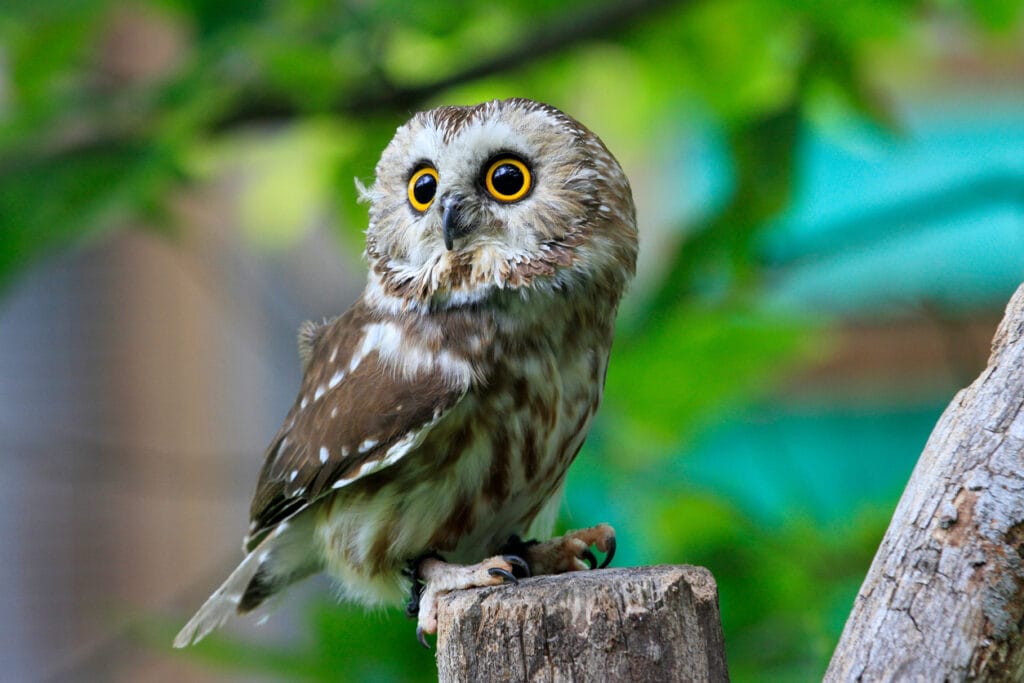
Northern Saw-whet Owls prefer habitats in thickets, swamps, and coniferous forests. Dig up cavities in trees where they set up their nests.
They’re also not shy about using nest boxes in your backyard. If you do decide to put one up, make sure it’s eye-level, preferably in a dense thicket of pine trees.
One of their interesting features is that they don’t like being high up. So, if you see a small-sized owl perching at eye level, it could very well be a Northern Saw-whet.
In addition, being close to the ground makes it easier to catch their food. They commonly hunt a wide variety of prey, like insects, small birds, deer mice, and voles.
11. Short-eared Owl

Short-eared Owls are endangered in almost all areas of North America, the Short-Eared Owl (Asio flammeus). Although, they can be occasionally spotted in parts of Minnesota.
These adorable predators have small ear tufts and black beaks. Their yellow eyes are small and close together. Combined with their sharp hearing, their keen eyesight makes them exceptional hunters, both day and night.
In addition, they prefer sticking close to the ground. Not only that, but they’re also one of the few species that dig their own burrows. They usually pick a raised, small mound somewhere in a field and start digging.
These mounds make the perfect place to stake out their prey. They sit there and wait for something delicious to pass along, which, for the most part, is small mammals or birds. Then, when they see something they like, they pounce on them from their low perches.
12. Snowy Owl
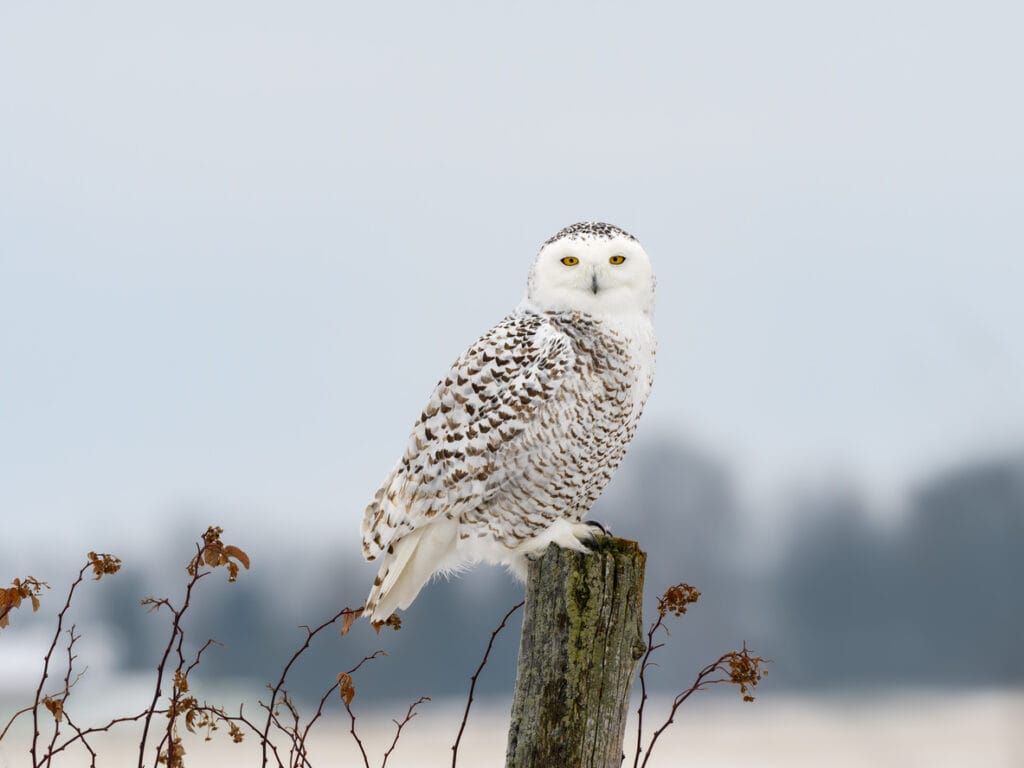
As the name suggests, Snowy Owls (Bubo scandiacus) are covered in all-white plumage. If it weren’t for the brownish spots on their wings and bellies, they’d melt right in with their snowy backgrounds. Juveniles, however, are covered in dark brownish markings, which they quickly grow out of.
Even though they’re not as big as the Great Gray Owl, they can get quite territorial and defensive like them. They’ve even been seen fighting off larger predators, even wolves, any time they sense their nests are in danger.
Author Note: Like many owls, their ears are asymmetrical. It helps them zero in on the location of their predator. Plus, it’s how they’re able to pick up on even the softest sounds. That makes it easy to pinpoint the location of any prey, even those hiding in the snow.
They’re also known for their silent flight patterns that make them undetected by their prey. It’s a feature that comes in handy when they’re flying low to the ground, looking for food in all that snow.
Final Note
It’s estimated that there are over 1,200 species of birds in North America. Out of those, the mighty owl is one of the most dignified and awe-inspiring.
All the 12 species of owls in Minnesota on our list are fierce predators, regardless of their size. It’s their keen sense of sight and acute hearing that makes them a force to reckon with. Then, there’s their amazing ability to fly undetected. No one knows they’re coming until it’s too late!
So, the next time you’re in the great ‘North Star State,’ make sure you keep an eye out for these astute hunters. If they’re nocturnal, or good at blending in with their environement, you can always tell when there’s an owl nearby by their calls.
Regardless, almost all 12 species are spread out across the state. So, whichever part you’re in, you’re sure to run into one hooting owl or another.
Happy owl watching!
FAQ
The Great Horned Owl is the most common species in Minnesota. They begin nesting in winter and this is a great time to hear them calling and screeching.
No, they actually aren’t that rare. It’s just that they are nocturnal which makes them difficult for us to find them. They are also usually found in rural areas away from humans.
Although there are hawks that are larger than owls, in general owls are stronger than hawks. They do not need the same kind of agility that hawks need as hawks hunt in the day and need speed for surprising prey.




